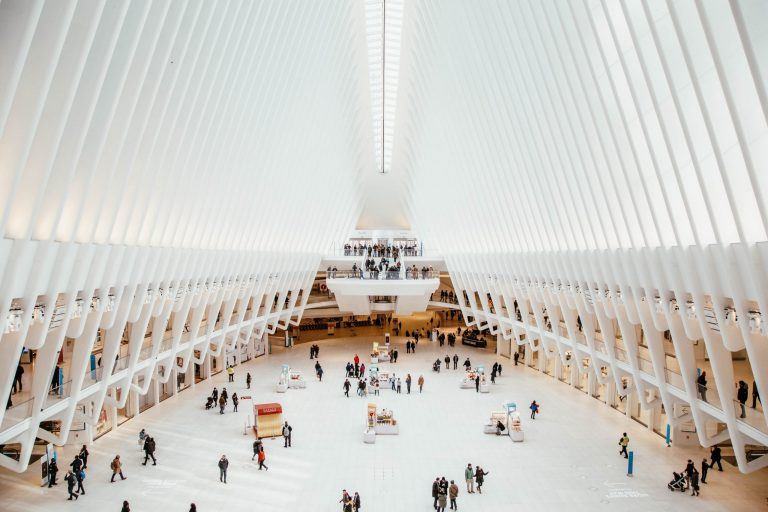Together with the national memorial, the 9/11 Memorial Museum shares the history and impact of the September 11th attacks with visitors from all around the world. A visit to the museum allows you to learn more about the event, with details of the day, personal accounts from witnesses and various artifacts.
It’s a sobering and moving experience. There aren’t many museums in the world that you can walk through that feel more like a memory than an education — at least, that’s the way it is for me as a New Yorker. But in some ways, as Americans, we all share this memory, and even those from other countries remember that day. It was a tragedy felt around the world.
Visiting the 9/11 Memorial is a must, but if you’re able to visit the museum afterward, it’s truly worth the money and time. There’s a lot you may want to know before your trip. In this guide, I’ll share helpful info to plan your visit plus an in-depth look at all the major exhibits in the 9/11 Museum.
General museum info

The 9/11 museum opened to the public officially on May 21, 2014.
While the entrance and exit are both through an above ground pavilion, this merely serves as a bridge, connecting the past events held in the museum with the promises of the future.
The museum sits entirely below-ground, highlighting various archaeological remnants of the original World Trade Center. Each core exhibition actually sits inside the footprints of the North and South Towers.
There’s over 70,000 artifacts in the permanent collection. This ranges from material evidence to first-person testimony to historical records.
Most people would recommend spending about 1.5-2 hours at the museum. This is generally enough time to see everything briefly. But if you’re looking to take your time and absorb all of the information, I would say 3-4 hours is more appropriate.
Planning your visit

Getting to the museum
Whether you’re traveling by subway, bus or car, there’s plenty of options to get to the museum. The address, for anyone driving, is 180 Greenwich Street. It sits in the middle of the memorial plaza, between the north and south pools on the east side.
If you’re using the subway, your options are:
- A, C, 1, 2, 3 train to Chambers Street
- A, C, J, Z, 2, 3, 4, 5 train to Fulton Street
- 2 or 3 train to Park Place
- E train to World Trade Center
- R train to Rector Street
- R train to Cortlandt Street
- 1 train to World Trade Center Cortlandt
Those of you traveling in for the day from New Jersey can take the PATH train directly to the World Trade Center terminal.
If you’re driving to see the 9/11 Memorial, cheap parking options are fairly limited. The museum doesn’t provide parking, and it can be tough to find a spot in Lower Manhattan. Battery Parking Garage is a nearby parking facility at 70 Greenwich Street. There’s a number of alternate parking facilities near the museum as well.
Once you arrive at the building, the entrance is on Greenwich Street, directly across from the Oculus. The exit is on the exact opposite corner, on the south side of the plaza at Liberty Street.
Tickets to the 9/11 Museum
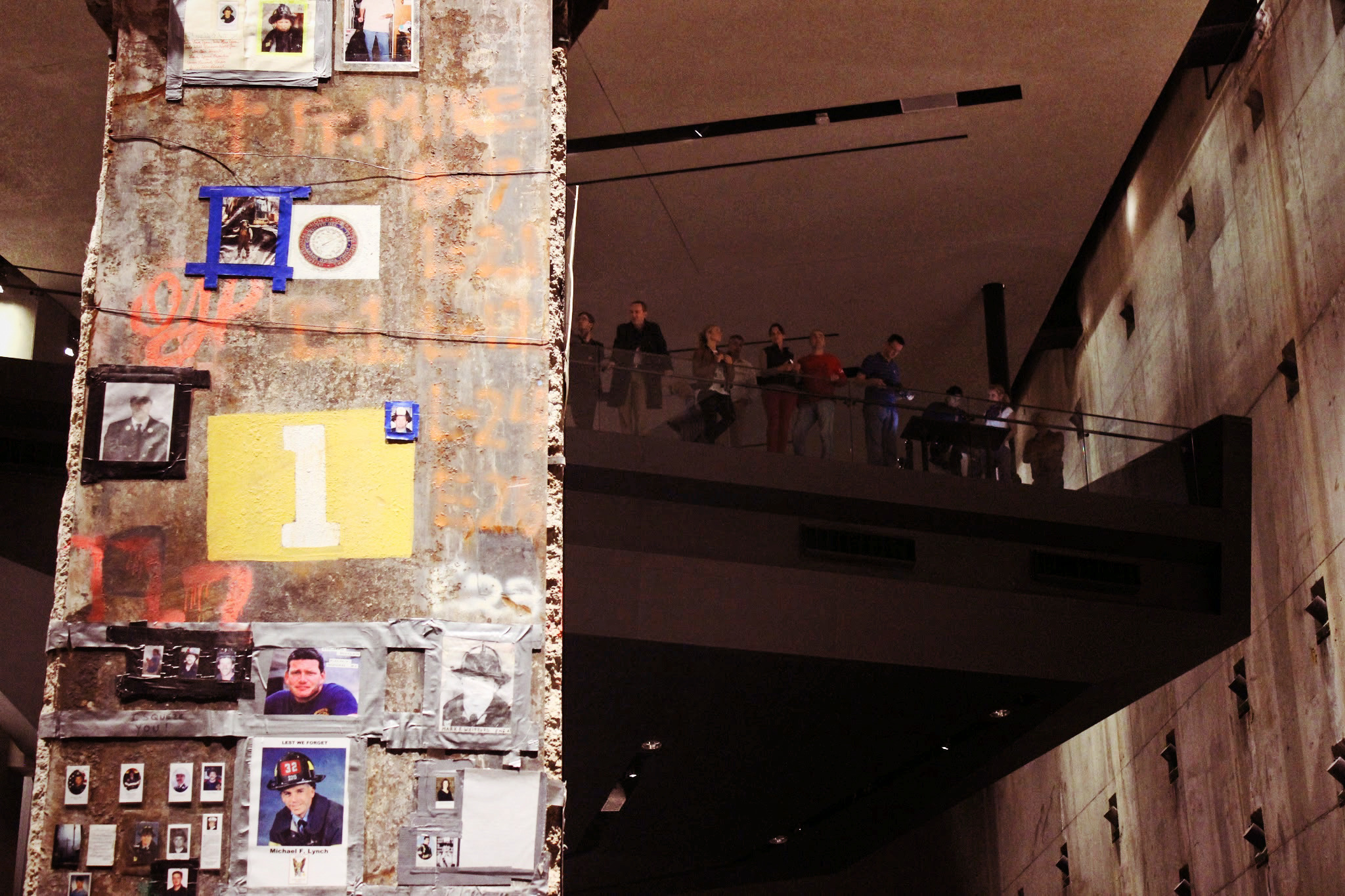
Unlike access to the memorial, the museum isn’t free and must be reserved. If you visit Ground Zero as part of a tour, we’ll handle all of that for you.
If you’re going on your own, museum tickets may be purchased the day of or up to six months in advance. If you’d like to buy in advance, you can easily do so using their website. Purchasing tickets involves selecting an entry time, which allows for smoother security lines and less waiting.
Prices are as follows:
- Adults: $26
- Youth (7 to 12): $15
- Young Adult (13 to 17): $20
- Seniors (65+): $20
- College Students: $20
- U.S. Veterans: $18
- FDNY/NYPD/PAPD: $12
- 9/11 Family Members/Rescue and Recovery Workers/Museum Members/Active U.S. Military: FREE
If you’re looking to save money, you can purchase a Family Pass (2 adult & 3 child/young adult) tickets for the discounted price of $82. Or visit the museum on a Tuesday between 5-8 p.m. when admission is free for everyone.
Museum hours
From Sunday through Thursday, the museum opens at 9 a.m. and closes at 8 p.m. On Friday and Saturday, it opens at the same time but closes an hour later at 9 p.m.
Last admission is two hours prior to closing time.
On September 10th, the last public entry to the museum is at 3:30 p.m. After 4 and all day on September 11th, the museum is closed to the public. Only the 9/11 community is permitted access.
COVID-19 update: At this time, opening hours and ticket policies are slightly different due to the pandemic. The museum is only open Thursday through Monday from 10 a.m.-5 p.m. Last admission is one hour prior to closing, and the free admission is on Monday (not Tuesday) from 3:30-5 p.m. This will continue until otherwise noted, so be sure to check the website before your visit for the most up-to-date information.
Accessibility
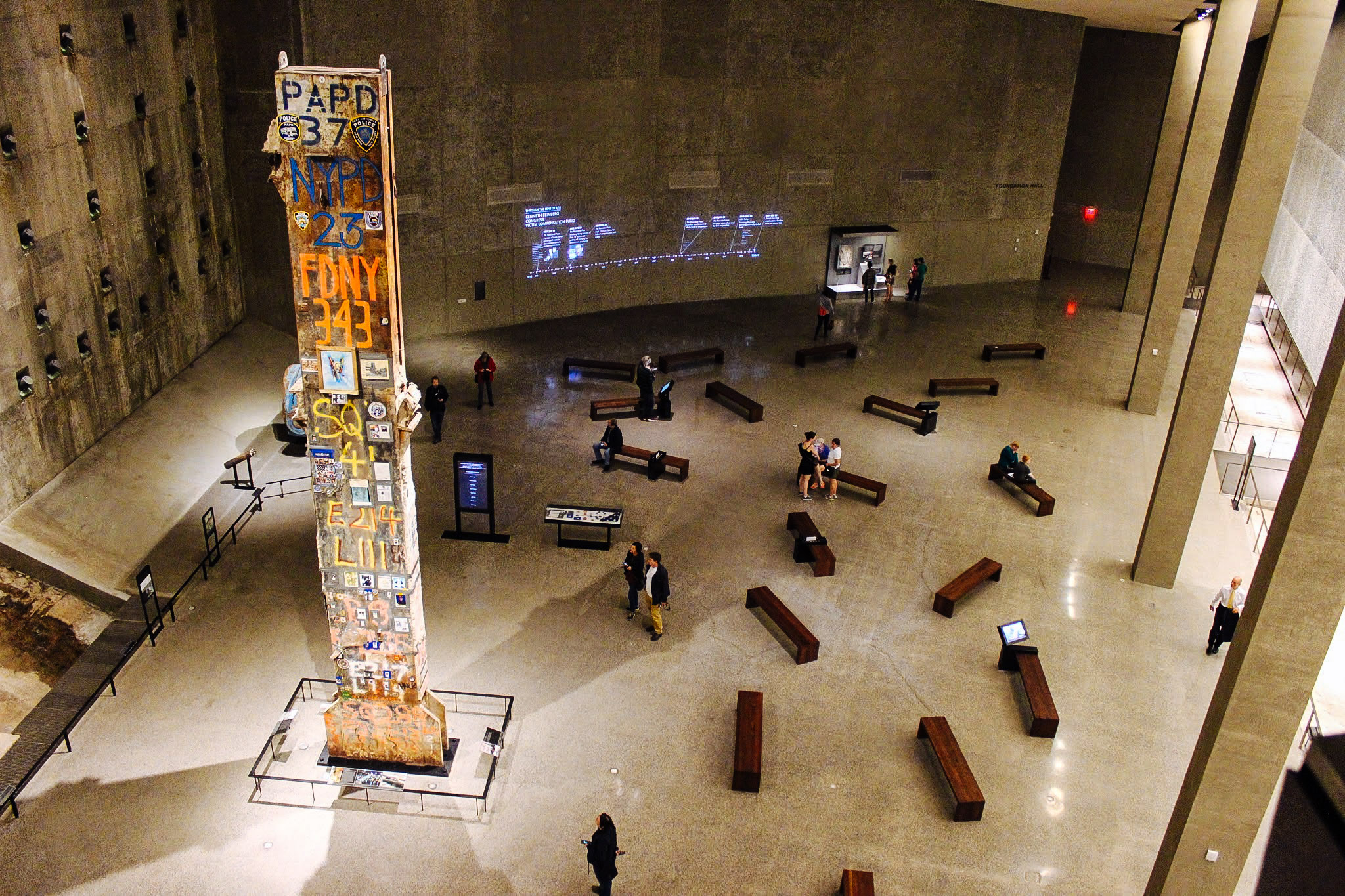
Both the exit and entrance to the museum are wheelchair accessible. There are ramps, escalators or elevators offered throughout wherever there are stairs. Any visitor with disabilities may use a mobility device, such as manual or electric wheelchairs, mobility scooters, walkers, crutches and canes.
Service animals are also welcome.
Visitors should be aware that there is limited seating inside the museum. Benches are available throughout but are not always readily available.
Any and all media installations that feature audio include open captioning or transcripts. The audio tour that is available also includes an optional audio description tour, with detailed descriptions of the museum’s exhibitions.
Security
All visitors to the museum will go through a security screening before entry. For this reason, it’s best to bring only essential items with you to make the process faster and easier. You will also pass through magnetometers, but alternative screening techniques are also available.
Prohibited items include:
- Marking instruments (spray paint, liquid paint, markers, glass cutters, etc.)
- Hazardous materials
- Weapons and tools (firearms, knives, cutting tools, realistic replicas of firearms, mace, pepper spray, tear gas, chlorine, or liquid bleach)
- Explosives, including fireworks
- Noise making or amplification devices, including radios and bull horns
- Alcoholic beverages
- Controlled substances
- Narcotics
- Powdered substances, liquid soap, and bubbles
- Glass bottles
- Alkali metals
- Ropes or wires
Museum exhibits
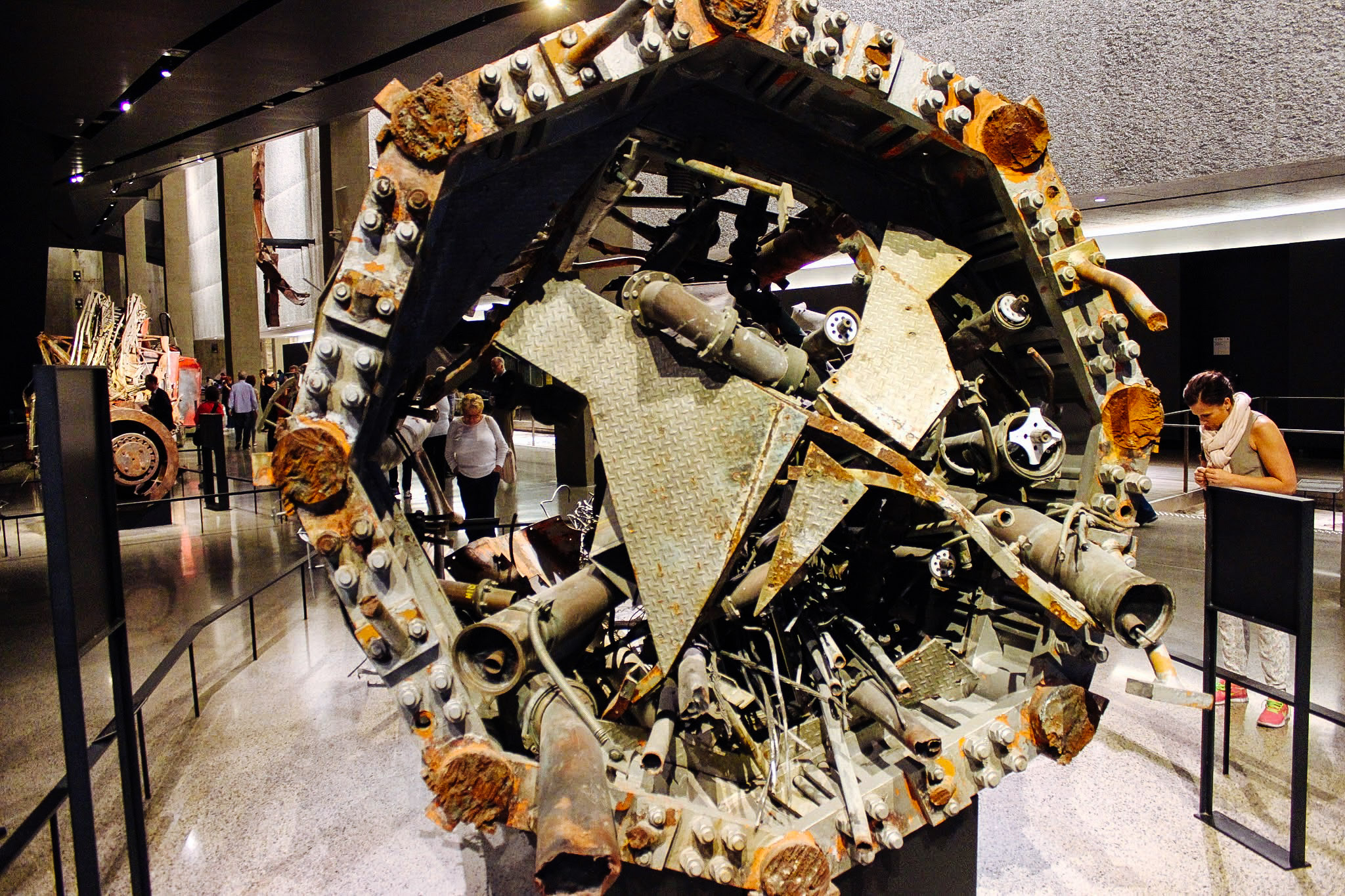
I’ll say it again —the permanent collection in the museum is impressively large and detailed. With thousands of artifacts on display, there’s even an online catalog with a database available to search through select objects.
Here are a few of the best exhibits in the 9/11 Museum.
Survivors’ Stairs
One of many historic remnants inside the museum, the Survivors’ Stairs provided an unobstructed exit for hundreds of people fleeing the World Trade Center site. These stairs still stand in their original location, at the edge of the elevated trade center plaza. Today, visitors follow these exact stairs from the entry ramp to the main exhibition level.
This ramp is also indicative of the World Trade Center site. It reflects the giant ramp used to build the original complex in the 1960s and the ramp that was installed during the post-9/11 recovery period to help remove wreckage and allow access to Ground Zero.
Memorial Hall
These words I saw on the wall of the 9/11 Museum are so true: “No day shall erase you from the memory of time.” Thinking about all who perished and their family and friends today. #NeverForget pic.twitter.com/PehWI2k6nG
— Marlee Matlin (@MarleeMatlin) September 11, 2020
This space is located in between the footprints of the original Twin Towers. It’s home to two pieces of artwork.
The first is a quote forged of steel recovered from the World Trade Center — “No day shall erase you from the memory of time.”
Around the quote is the second piece of art, titled “Trying to Remember the Color of the Sky on That September Morning.” It’s made up of 2,983 individual watercolor squares, each with its own shade of blue, one square for every victim.
Foundation Hall
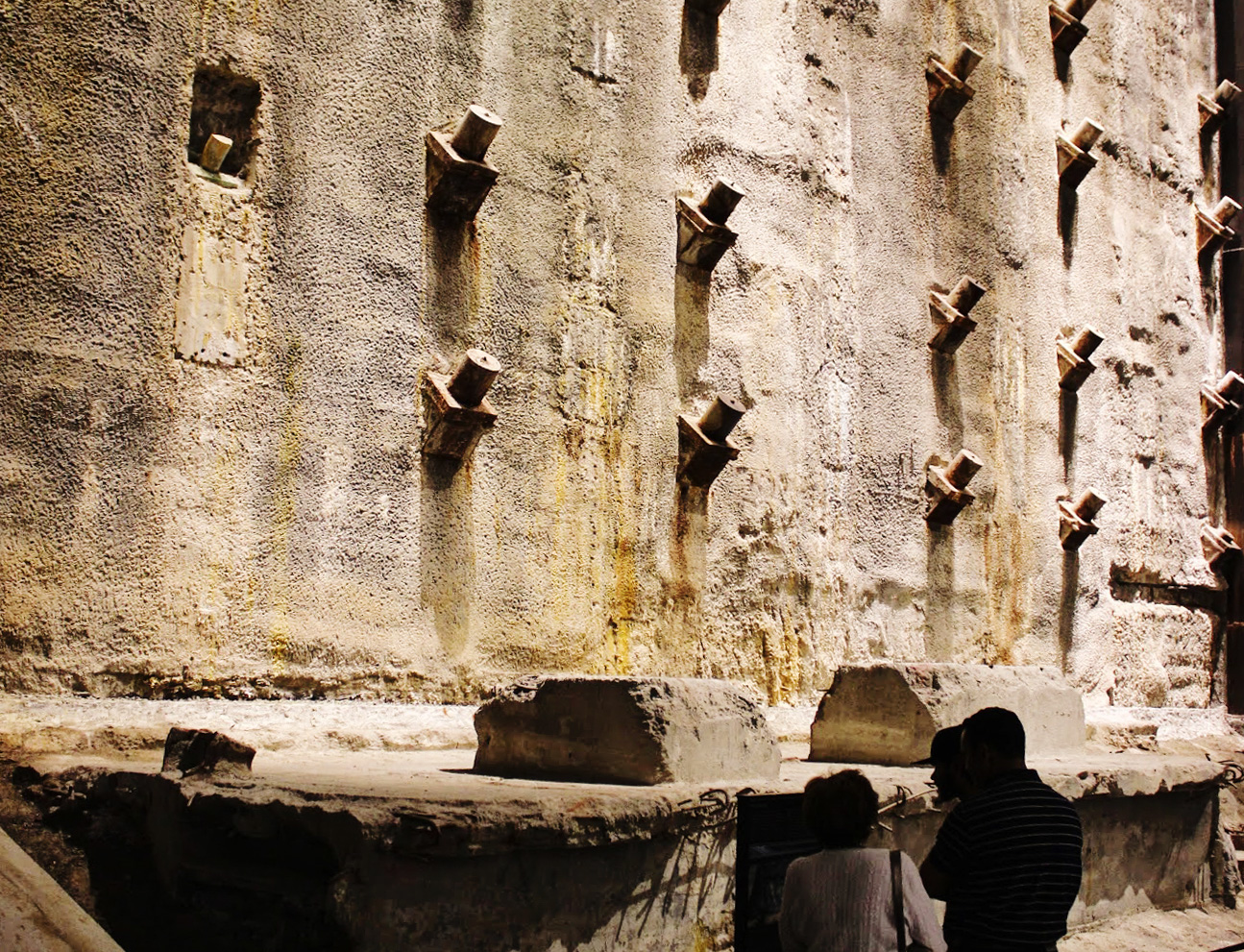
Foundation Hall is the largest space in the museum, standing beside the North Tower footprint. This is also where you will find a portion of the slurry wall — the concrete retaining wall built to hold back the water of the Hudson River when the World Trade Center site was excavated. It remained intact after the events of 9/11.
In the center of Foundation Hall is the Last Column. This is the final piece of steel from the World Trade Center to be removed from Ground Zero. It’s covered with mementos and signatures, left by rescue and recovery workers as they cleared Ground Zero.
“In Memoriam”
In the South Tower footprint, this memorial exhibition commemorates each victim of the September 11th attacks plus the victims of the terrorist bombing in 1993. The four walls of each room are adorned with a floor-to-ceiling presentation of 2,983 portrait photographs, ranging from age 2 ½ to 85, from over 90 nations.
In the center of the gallery, there are various artifact cases with displays of recovered property and objects that represent the interests and activities of many of the victims. New cases are brought in every year.
“September 11, 2001”
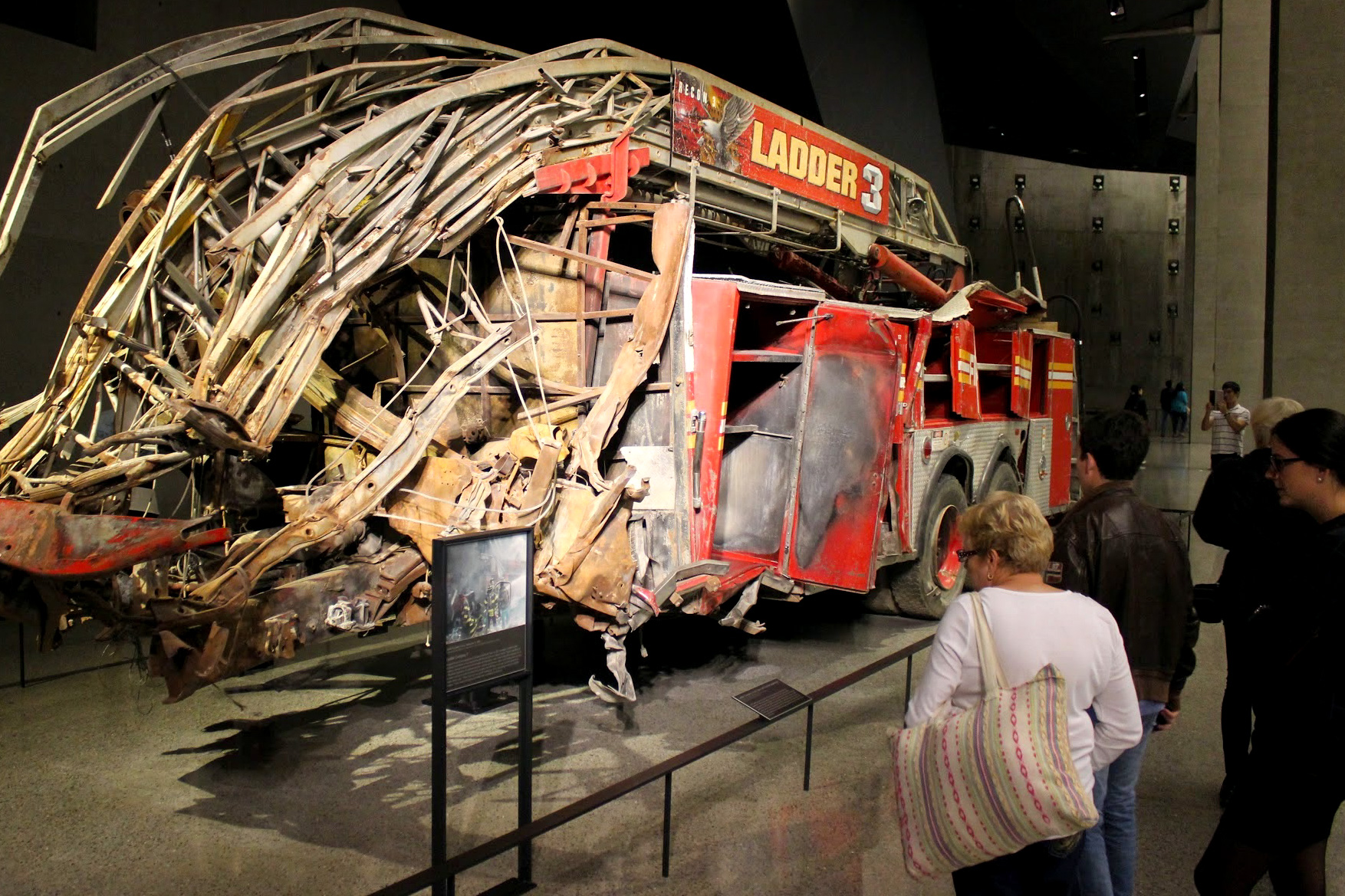
This exhibit is located in the North Tower footprint. It’s a historical exhibition which revists the events of 9/11 minute-by-minute and explores the significant events both prior to and after the attacks.
There are three parts to the exhibit:
- “Events of the Day,” as they unfolded
- “Before 9/11”, the historical context leading up to the attacks including the 1993 bombing
- “After 9/11”, the aftermath of the attacks through the end of the recovery and its ramifications
Revealed: The Hunt for Bin Laden
With access to over 60 artifacts never before shared with the public, this exhibit leads you through the global hunt for Osama bin Laden, known as Operation Neptune Spear. You’ll hear testimony from various intelligence officers, law enforcement, military members and various individuals who were involved in the 10 year hunt and eventual raid.
Covid-19 update: Due to space limitations, this exhibit will be closed until further notice. However, you can still check out the exhibit online.
A place of remembrance and education
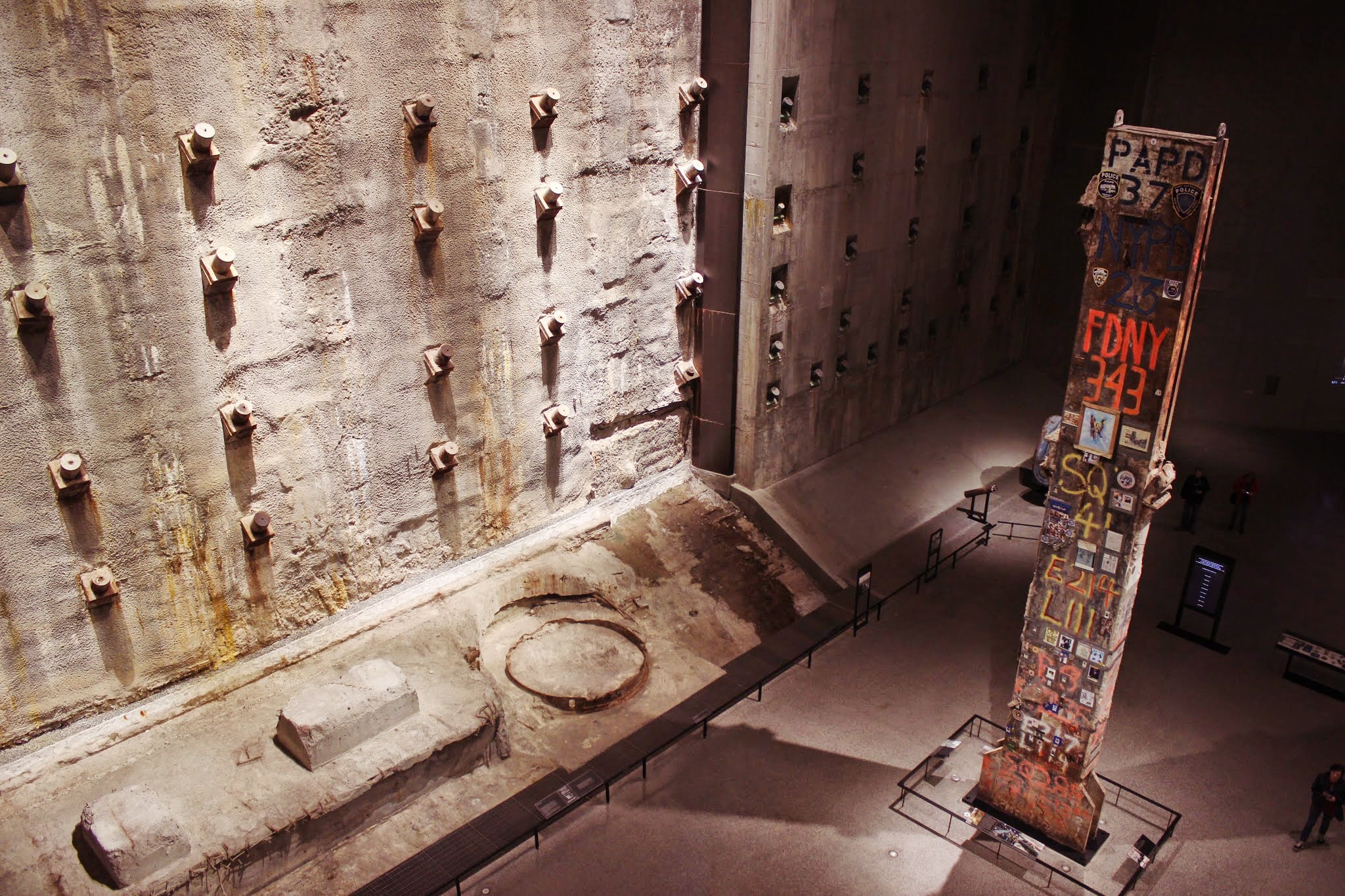
As such a personal and memorable tragedy for so many people, you might think you know everything about September 11th. You might think the museum is too upsetting or unsettling — and I agree it can be emotionally moving. But as a tour guide and a New Yorker, I think the museum is the best way to remember this event.
It holds some of the darkest memories in our country’s history and yet, there’s a level of respect and honor that you can’t help but appreciate. For years to come, future generations, who are fortunate enough not to have their own distinct or personal memory of 9/11, will experience this unforgettable encounter and forever be impacted the way so many of us were on that day.
Living through 9/11 does impact you. Our Ground Zero tour guides all have a personal connection to September 11th, and they take the time to share that with every tour group that comes through. Whether you see just the memorial or choose the 9/11 Memorial & Museum tour, you’ll learn about the events of that day from someone else’s experience. And, after all, that’s what this is about, preserving the past so we remember for the future.

